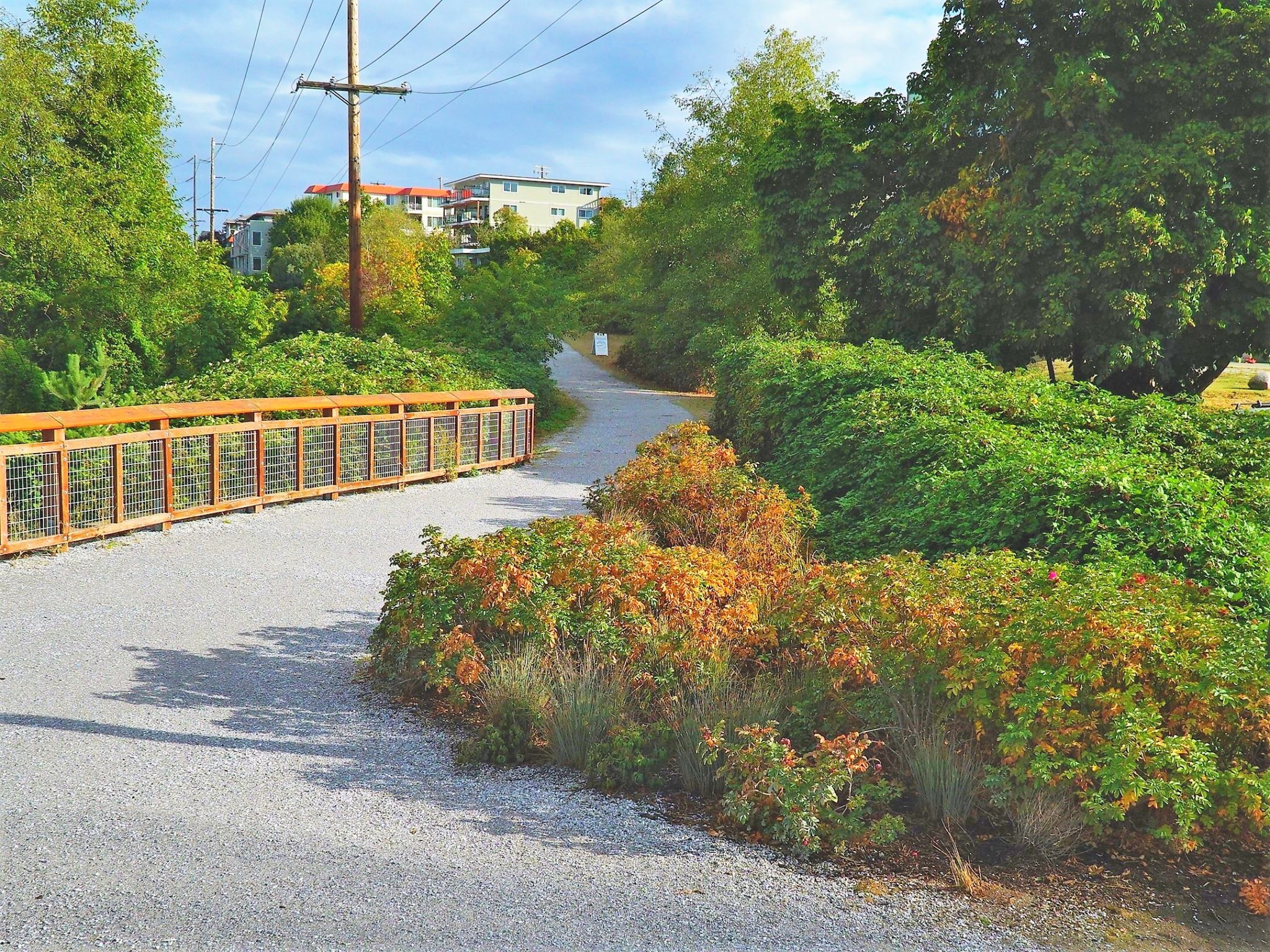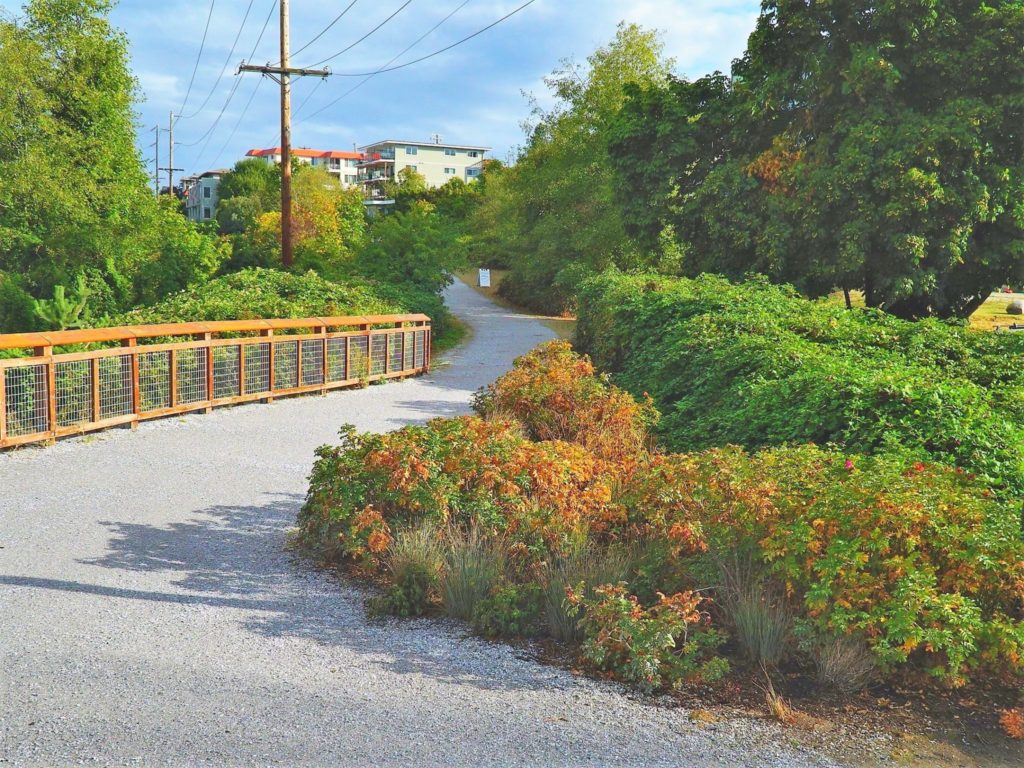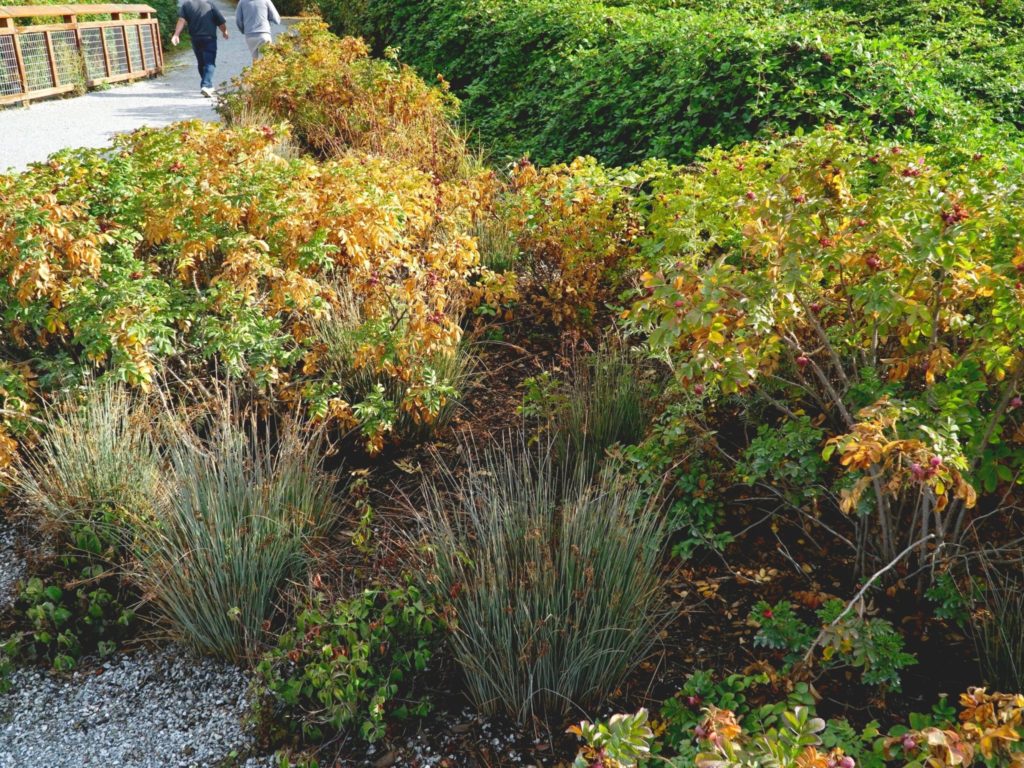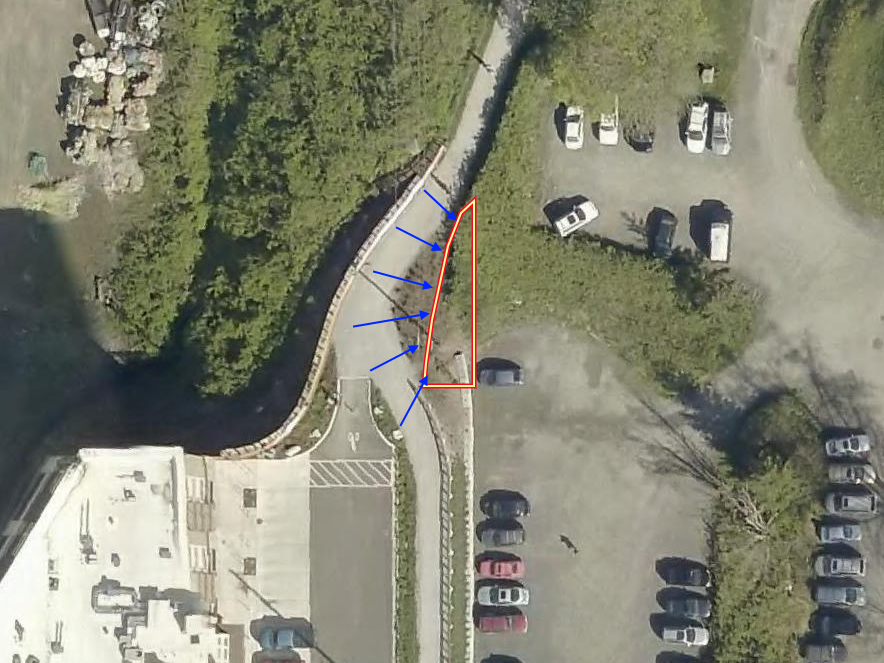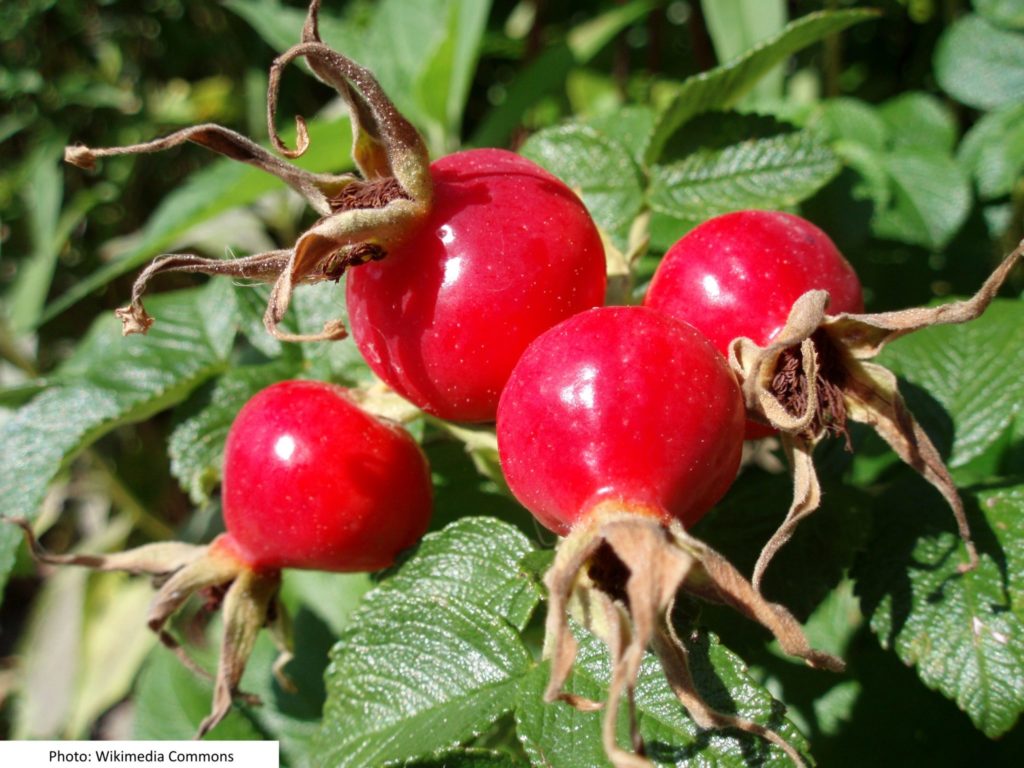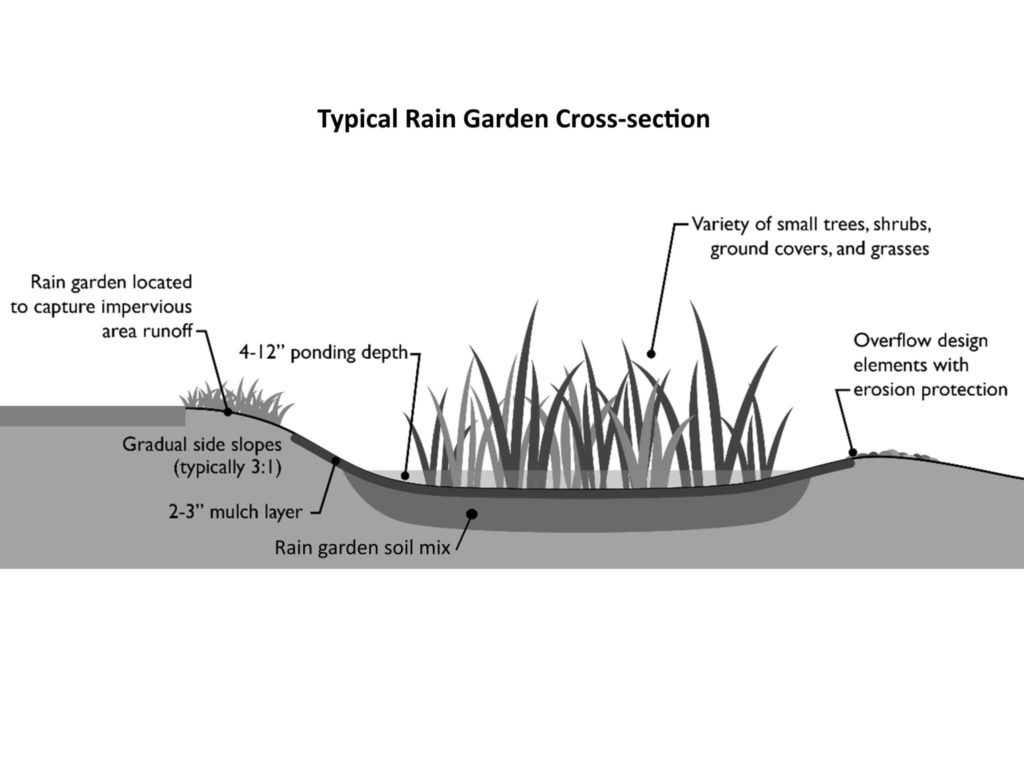Where is this located? It’s just 20 feet further along the West Bay Trail from the 10th Street Rain Garden.
What’s special about this place? This natural vegetation is more than just a pretty little spot on the side of the trail. This low-impact technique captures and filters out muddy stormwater that runs off the trail’s surface. With wild rose bushes and grasses, it was intentionally installed here on the trail. The mulch and hardy native plants used here are selected for their ability to absorb water through their roots. As thorny as the wild roses are, many animals eat their seeds, petals, and orange/red fruit called rose hips. Rain gardens are very good at what they do. They can remove up to 90% of nutrient pollution and chemicals found in stormwater runoff. They can also capture up to 80% of sediments contained in the runoff. Compared to lawns, rain gardens allow 30% more water to soak into the ground.
image gallery
select any photo to see a slideshow
